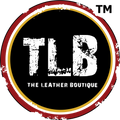The Luxurious Story of Leather
The ingenuity of man in discovering leather through hiding and the mark it made on civilizations down the ages did not restrict itself to history books. The demand for leather grew as entrepreneurs tirelessly thought of new ways to purpose its appeal, especially to the elite. It is documented that early tanners took almost a year to prepare a single sheet of leather. They organized themselves into ordained guilds like the Worshipful Company of Leather sellers to consolidate the growing demand for the hide from the rich and elite by 1398. It was found on items of luxury from chairs to packaging in almost every home of noble standing around the world. Leather had arrived as a symbol of luxury. And it was here to stay.
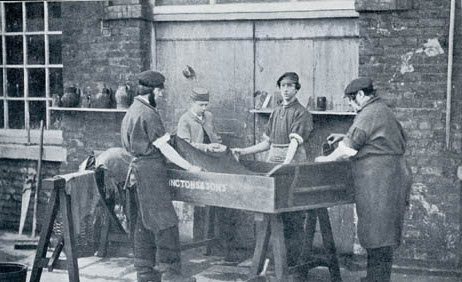
19th-century tanners working their hide to render them supple yet sturdy without compromising its sheen.
Although historians speculate with sparing evidence that leather appeared on chairs as early as the fifth century AD, it had visibly permeated palaces and castles by the fifteenth century. In 1388, the historical Hotel de Bohême in Paris famously commissioned four Aragon leather carpets as well as twenty-four chairs covered in the same exquisite hide and dyed vermilion. By 1513, leather upholstery had scaled new heights when it reached the high grounds of the Vatican – Pope Leo X’s palace walls were covered with leather stamped and gilded onto Genoese velvet. All forms of chairs from spiral-legged Cromwellian to high-backed Spanish and Portuguese were finished most commonly with brown leather during the seventeenth century and by the late eighteenth, the iconic Chesterfield had made its enduring mark.

Cromwellian chairs like these were upholstered with gilded or dyed leather as they marked the social superiority of the homes they entered.
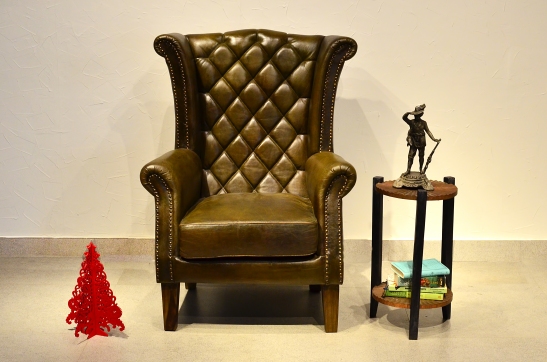
It is believed that Lord Phillip Stanhope, the 4th Earl of Chesterfield (1694-1773), commissioned the first leather chesterfield settee. Earl was a known trendsetter, who once requested a local craftsman to make a piece of furniture that would allow a gentleman to sit upright in the utmost of comfort, allowing sitting without wrinkling the garment.
TLB adopts this iconic chair and covers it in supple olive leather.
Around the same time, trunk sellers began adorning their sells with leather, both inside and out. Used initially to efficiently cover garments, trunk makers quickly realized the utility of covering their wooden boxes as well with leather and brass tacks. It was sturdy and luxurious at the same time, and the aristocracy of Europe and England lapped it up. It soon reached the shores of America and became a most notable statement in style and success. These trunks were the hardy ancestors of a long line of suitcases, duffels and handbags to follow – all steeped in unmistakable luxury. Car manufacturers of the 20th century hopped on the same bandwagon of leather luxury and began upholstering their seats with rich colours of the opulent upholstery. Even today, indulgent leather car seats are associated with classic brands like Rolls Royce, Bentley, Jaguar, Ferrari and Maserati, to name just a few.
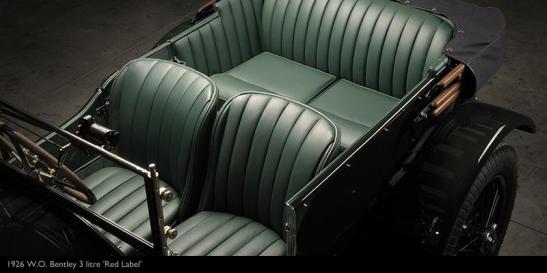
Leather-like the one found on this 1926 Bentley were specially crafted for luxury automobiles by companies like the British Connolly Leather Ltd.
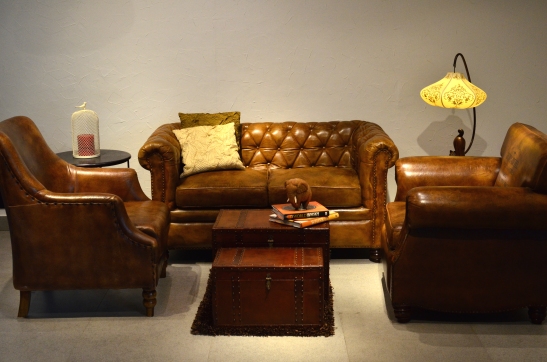
Trunks that were the ultimate symbols of wealth, can now be found in our store as statement pieces of home décor complete with subtle functions of utility.
It is this very history of luxury, élan and panache that we, at TLB pour into our every piece. A seamless merging of classic styles and contemporary functionality allow us to straddle the past and the present as we passionately deliver leather as an age-old symbol of your everyday luxury.
